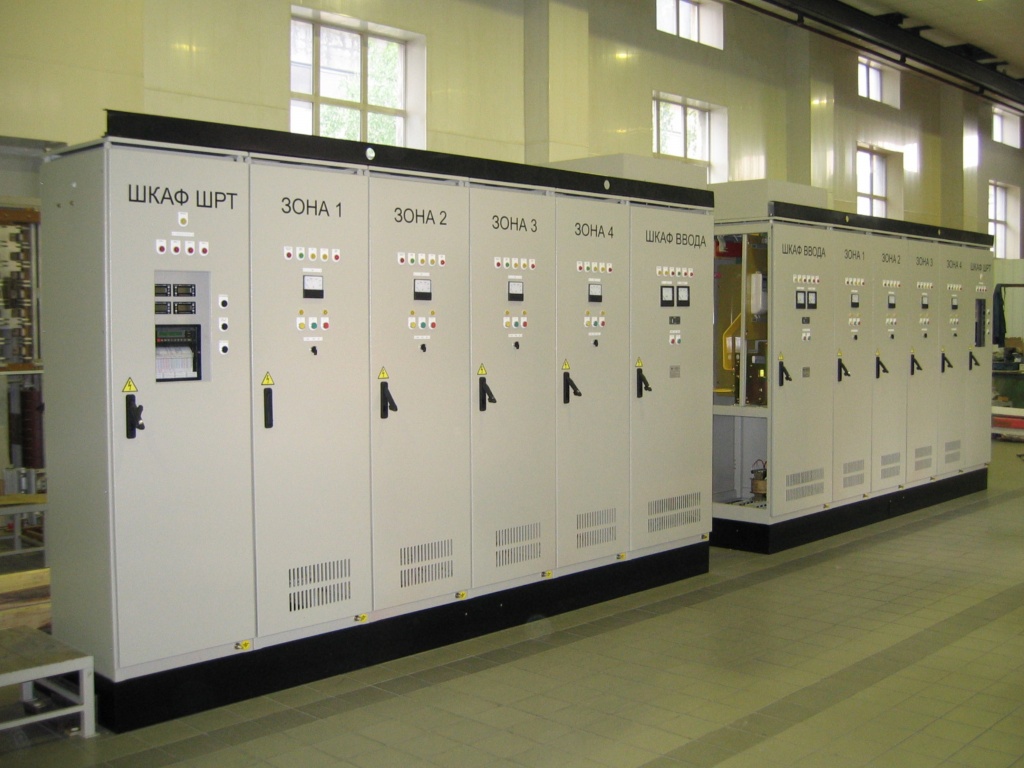
What is Switchgear?
The apparatus used for switching, controlling and protecting the electrical circuits and equipment is known as switchgear.
The term ‘switchgear’ is a generic term encompassing a wide range of products like circuit breakers, switches, switch fuse units, off-load isolators, HRC fuses, contactors, earth leakage circuit breakers (ELCBs), etc…
Components of Switchgear
A switchgear essentially consists of switching and protecting devices such as switches, fuses, isolators, circuit breakers, relays, control panels, lightning arrestors, current transformers, potential transformers, and various associated equipments.
Some equipments are designed to operate under both normal and abnormal conditions. Some equipments are meant for switching and not sensing the fault.
During normal operation, switchgear permits to switch on or off generators, transmission lines, distributors and other electrical equipment. On the other hand, when a failure (e.g. short circuit) occurs on any part of power system, a heavy current flows through the equipment, threatening damage to the equipment and interruption of service to the customers. However, the switchgear detects the fault and disconnects the unhealthy section from the system.
Evolution of Switchgear
The switchgear equipment is essentially concerned with switching and interrupting currents either under normal or abnormal operating conditions.
- The tumbler switch with ordinary fuse is the simplest form of switchgear and is used to control and protect lights and other equipment in homes, offices etc.
- For circuits of higher rating, a high-rupturing capacity (H.R.C.) fuse in conjunction with a switch may serve the purpose of controlling and protecting the circuit. However, such a switchgear cannot be used profitably on high voltage system (33 kV) for two reasons.
- Firstly, when a fuse blows, it takes sometime to replace it and consequently there is interruption of service to the customers.
- Secondly, the fuse cannot successfully interrupt large fault currents that result from the faults on high voltage system.
With the advancement of power system, lines and other equipments operate at high voltages and carry large currents. When a short circuit occurs on the system, heavy current flowing through the equipment may cause considerable damage. In order to interrupt such heavy fault currents, automatic circuit breakers (or simply circuit breakers) are used.
- A circuit breaker is a switchgear which can open or close an electrical circuit under both normal and abnormal conditions. Even in instances where a fuse is adequate, as regards to breaking capacity, a circuit breaker may be preferable.
- It is because a circuit breaker can close circuits, as well as break them without replacement and thus has wider range of use altogether than a fuse.
Essential Features of Switchgear
The essential features of switchgear are:
- Complete reliability: With the continued trend of interconnection and the increasing capacity of generating stations, the need for a reliable switchgear has become of paramount importance. This is not surprising because switchgear is added to the power system to improve the reliabil-ity. When fault occurs on any part of the power system, the switchgear must operate to isolate the faulty section from the remainder circuit.
- Absolutely certain discrimination: When fault occurs on any section of the power system, the switchgear must be able to discriminate between the faulty section and the healthy section. It should isolate the faulty section from the system without affecting the healthy section. This will ensure continuity of supply.
- Quick operation: When fault occurs on any part of the power system, the switchgear must operate quickly so that no damage is done to generators, transformers and other equipment by the short-circuit currents. If fault is not cleared by switchgear quickly, it is likely to spread into healthy parts, thus endangering complete shut down of the system.
- Provision for manual control: A switchgear must have provision for manual control. In case the electrical (or electronics) control fails, the necessary operation can be carried out through manual control.
Classification of Switchgear
Switchgear can be classified on the basis of voltage level in to the following
- Low voltage (LV) Switchgear
- Medium voltage (MV) Switchgear
- High voltage (HV) Switchgear
